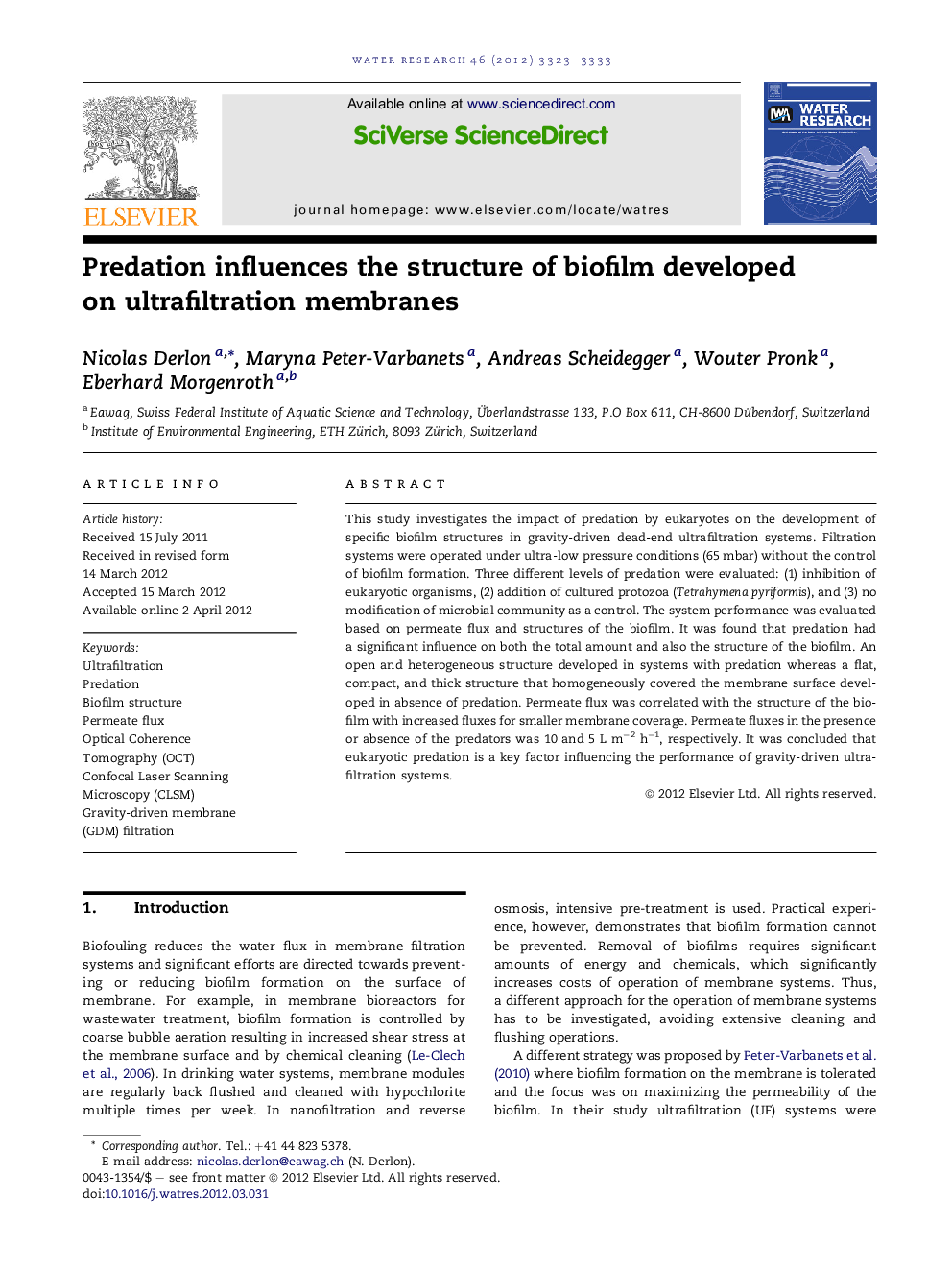| Article ID | Journal | Published Year | Pages | File Type |
|---|---|---|---|---|
| 4483348 | Water Research | 2012 | 11 Pages |
This study investigates the impact of predation by eukaryotes on the development of specific biofilm structures in gravity-driven dead-end ultrafiltration systems. Filtration systems were operated under ultra-low pressure conditions (65 mbar) without the control of biofilm formation. Three different levels of predation were evaluated: (1) inhibition of eukaryotic organisms, (2) addition of cultured protozoa (Tetrahymena pyriformis), and (3) no modification of microbial community as a control. The system performance was evaluated based on permeate flux and structures of the biofilm. It was found that predation had a significant influence on both the total amount and also the structure of the biofilm. An open and heterogeneous structure developed in systems with predation whereas a flat, compact, and thick structure that homogeneously covered the membrane surface developed in absence of predation. Permeate flux was correlated with the structure of the biofilm with increased fluxes for smaller membrane coverage. Permeate fluxes in the presence or absence of the predators was 10 and 5 L m−2 h−1, respectively. It was concluded that eukaryotic predation is a key factor influencing the performance of gravity-driven ultrafiltration systems.
Graphical abstractFigure optionsDownload full-size imageDownload high-quality image (283 K)Download as PowerPoint slideHighlights► Predation affects biofilms developed during gravity-driven dead-end ultrafiltration. ► Predation resulted in more open and heterogeneous biofilm structures. ► Open and heterogeneous structures induced higher permeate fluxes.
